Is there anything in the realm of agave spirits more derided than a crema de mezcal?
I am not a snob when it comes to cream alcohols. My grandfather had a shot of “shootin sherry” (Harveys Bristol Cream) several times a week and he passed his love of that down to me. I eventually “discovered” Baileys Irish Cream in the family liquor cabinet, which one could say was where my true love of alcohol and dairy products began. All was cemented while in college at the University of Wisconsin, where I developed a deep love for Grasshoppers and Brandy Alexanders–good lord, ice cream and alcohol blended together, yes! So I was pretty much already naturally inclined toward cremas.
My very first mezcal crema was from Del Maguey. It actually wasn’t a crema in the strict sense of the word – there was no dairy in it. But in Spanish, there is no distinction between a crema and a creme (a heavily sugared, syrupy liqueur, think creme de menthe or creme de casis) so any spirit that has added sugar and flavorings is called a crema. The Del Maguey crema was typical of a crema that is made without dairy. The sweetness came from the addition of miel de agave, or agave nectar, to the mezcal. It was absolutely delicious and the pastry chef that was with us was already thinking of ways she could use it in her bakery. Thus began my love of Mexican cremas.
In its simplest form, Mexican cremas with milk or cream are made by mixing a base alcohol with milk or cream and adding flavors like chocolate, coffee, nuts, coconut, or fruits. The non dairy cremas are usually made with fruits and flowers like jamaica (hibiscus), and of course lots of sugar.
A brief history of cremas in Mexico
Much like distillation, cremas came to Mexico by way of the Spanish. It is believed that the first Mexican crema was created in the 17th century by nuns at the Santa Clara Convent in Puebla, Mexico. Basing their concoction on a traditional Spanish ponche (or punch) made of eggs, the sisters used rum, egg yolks, various spices, and cream to craft the first rompope, which is akin to egg nog. It quickly grew in popularity and has since become a traditional and popular beverage consumed during the Christmas holidays–and year round. It was only natural that this kind of concoction would spread to other alcohols, including mezcal.

People began experimenting and distilling with the plethora of native plants found in Mexico, including cacao, vanilla, prickly pear, nanche, and chile, and eventually transplanted fruits and spices like cinnamon, jamaica, tamarind and coconut. The results were liqueurs and cremas, the difference between the two being the amount of sugar added and the consistency, with cremas being much sweeter and more syrupy than the liqueurs.
Throughout history women have been steered toward these sugary, lower alcohol drinks which were perceived as more appropriate, especially among the upper classes. Recipes for cremas were usually created by women specifically for other women, which opened a new sales channel for spirits. And cremas were seen as another avenue to utilize excess production or sometimes even lesser quality distillates, be it cane or agave.
While cremas might have been intended for a primarily female consumer, the fact is men and women alike drink cremas. Case in point not only rompope but also the pajarete (basically a hot chocolate made from milk fresh from the teat with a shot of alcohol in it) that began with the early ranchers and cowboys of Jalisco and is now a tourist stop must.

The Case
When it comes to cremas, we need to let go of our biases or bad past experiences and open ourselves to the possibilities of what they can be when made with the very best ingredients. And let’s face it, most of us have a sweet tooth.
Several years ago, I was visiting with a young mezcalera in Sola de Vega. She had a collection of cremas that were absolutely delicious–tamarindo, jamaica, and guava. These cremas weren’t overly sweet and were perfectly balanced with the mezcal. While terrific on their own, they could have made great cocktail modifiers, which is something I often think about when tasting cremas. Of course it helped that the base mezcal was quite good. A similar thing happened when I was in raicilla country and tasted some delicious raicilla cremas of cafe, maracuya, and jamaica. Again, the base alcohol was good and the milk used was fresh from the cows that roamed the fields.



In April, I was given a bottle of bacanora crema from the family that makes Batuq. Sebastien Encinas (son of Rafael Encinas who oversees the production) had been playing around with a recipe. This was a crema with milk in it and it was absolutely delicious with hints of chocolate. Again, it helped that the base alcohol was very good quality, and also that you could clearly taste that the milk was fresh and full of fat. I think the biggest reason why people get put off by dairy based cremas is that the industrial productions use milk powder or something to mimic the texture of cream. And then there are all of the artificial sweeteners, flavorings, dyes–it’s no wonder cremas get a bad rap!
On a recent trip to Michoacan, we visited Palomas Mensajeras and had a chance to tour their vinata. In their bodega, they had several cremas, both fruit and milk based. I was curious to try the milk-based ones, and what I tasted was full mouthed, super creamy, and very sweet. When I asked Don Miguel’s daughter about the cremas, she explained that they were recipes developed by the women in the family and passed down. Because they use fresh cream, you need to ask about the shelf life–in this case a week or two outside refrigeration and about three months in the fridge. I ended up buying a bottle of the pignon, or pine nut, crema.



Are cremas traditional?
As Mezcalistas contributor Joahna Hernandez has written, the word traditional is complicated. When it comes to agave spirits, there’s a great deal of history that we do not know. We know a lot about production over the past five generations, but if you consider that a generation is usually defined as 20-30 years, at most, that goes back 150 years or so to 1875. Given that distillation arrived during the conquista (according to what is known now), that is just less than a quarter of that time span. A question that always comes up for me is: “How many generations does it take to make a tradition?” It is clear that rum or aguardiente-based cremas have been around in one form or another since the 17th century. How long it has been a “tradition” with mezcal can’t be said for sure–we know at least since the mid-1900s, or three generations.
When I have mentioned my love of cremas to other mezcal drinkers here in the US, it is usually met with eye rolls or flat out derision, and that is a shame. It is so easy to believe that cremas are only those found at roadside or market stands in Mexico that are generally sickeningly sweet concoctions with cheesy labels. But there are so many others made from solid ingredients that are balanced and delicious. There is a market here for those high quality cremas and I know the Dude would trade his White Russian in a heartbeat for that Batuq Crema served over ice.


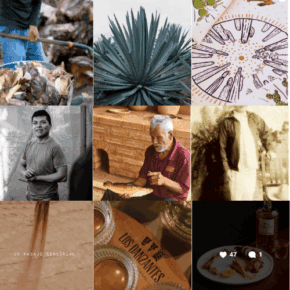
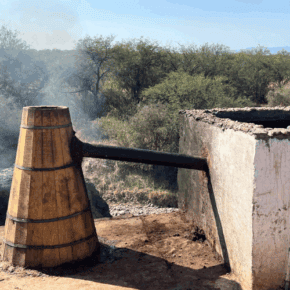
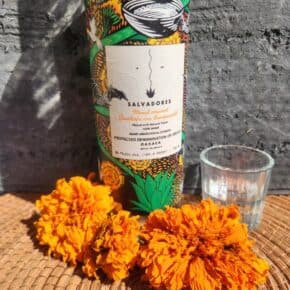
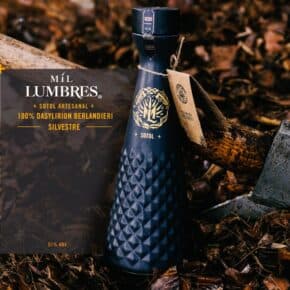
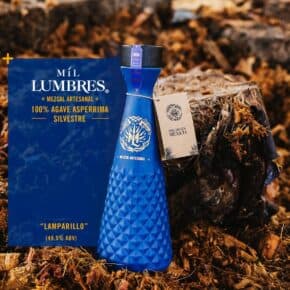





This is about your Mezcal crema story. I saw your words about the Del Maguey Crema. It was actually my first crema Mezcal also. I really enjoyed it and every time I see any Del Maguey products it is the first label I look for. I live in EL CENTENARIO,BCS,MEXICO which is a small community just outside of LaPaz. I would go to La Europea in Cabo San Lucas and also their store in San Jose del Cabo to see if I could find it whenever I was in that area. Not really much luck with finding it. I think I bought my first bottle in Washington state before I moved to Mexico in September 2016. I really enjoy that Mezcal because it has a very pleasant taste to me. I have had many different Mezcals and sometimes my Mexican bartender friends sell me bottles they receive from the mainland that are special bottlings. I just wanted to tell you about my liking of the Del Maguey brand. Some I enjoy and some I do not. In LaPaz Centro there is a nice Mezcal bar called Les Miserables. A small but very interesting place with good food too. Anyway, I hope to be able to explore a few cities on the mainland to enjoy some of the brands of Mezcal that are more difficult to find. Thank you for your time.
Michael, thanks so much for sharing your story and appreciation for the Del Maguey Crema!
Just to point out that Harveys Bristol Cream is neither a cream/crema/creme or a liquer ….its simple a sherry albeit a fairly sweet one.
Yes true, but as a kid it didn’t matter – it was just the name and me developing a taste for sweet liquors 🙂
great writing, Susan I had tried them but never got to appreciate them well
Thank you!